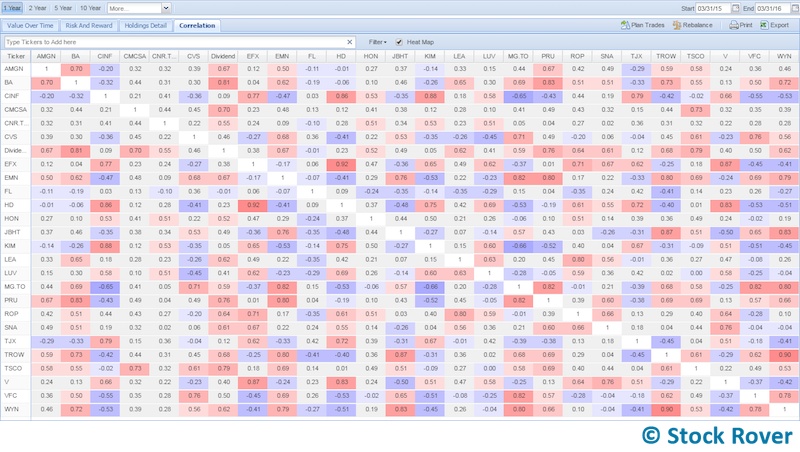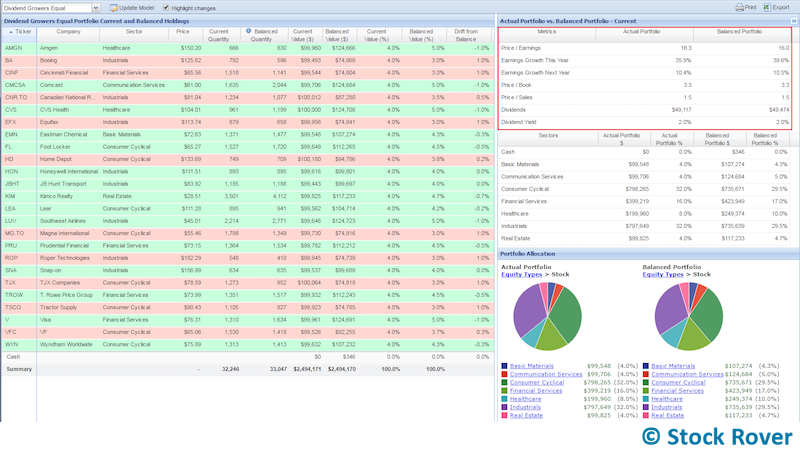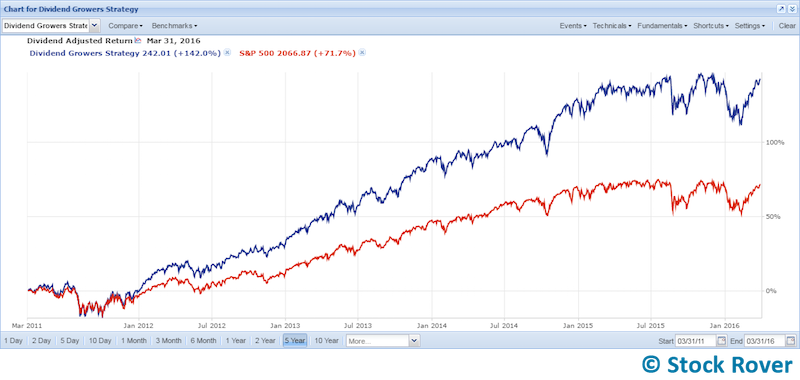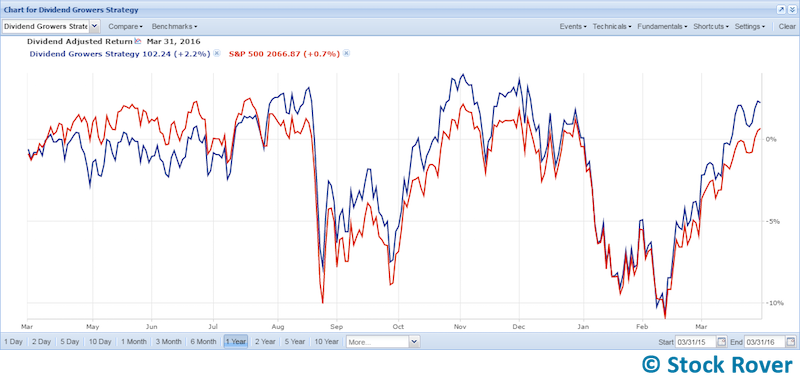Today Stock Rover presents two portfolios as part of what will become an ongoing strategy analysis series. Here I will introduce the Dividend Growers strategy portfolio. Read about our other strategy, Large Cap Capital Appreciation, here [1]. Both of these are available for download from our Investors’ Library [2].
The goal of the Dividend Growers portfolio is to achieve capital and income growth, outperforming the S&P 500 over the long term with a similar level of risk. All stocks in the portfolio must be large cap or near large cap and must have a history of increasing dividends. The portfolio is funded with $2.5M of virtual money.
Diversification parameters for the portfolio are as follows:
- Contains 25 companies across at least 5 sectors and 10 industries
- No sector is more than 30% of the overall portfolio and no industry is more than 20%
- No individual position is less than 2.0% or more than 6.0% of the overall portfolio
As the relative size of positions change, occasional rebalancing may be needed. Trades can be made at any time so long as the results do not violate the above parameters. We’ll be checking in regularly with the portfolio to see how the strategy is panning out.
Given the portfolio’s goals and parameters, I sought 25 diverse picks that were individually promising in terms of both capital appreciation and dividend growth. Here is the list I ended up with:
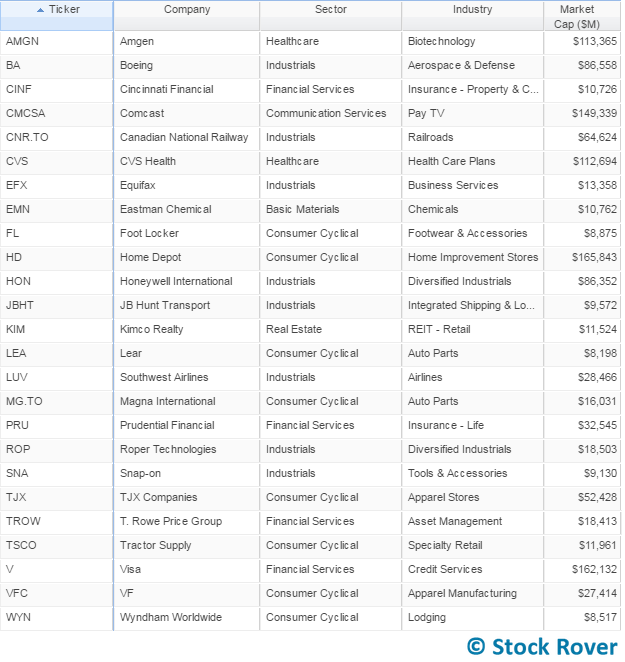
As you can see, there is wide variation in terms of industry and market cap, although a few sectors dominate. Despite the uneven spread across sectors, the holdings are not overly correlated with one another. Here is the 1-year correlation table for these companies:
Lots of light pink, grey, and blue in the above table indicate that these stocks have not historically been highly correlated in their price movement. (For more information on correlation, go here [4].)
After finding and vetting the 25 stocks I wanted to include in the portfolio, I determined how to allocate the $2.5M of virtual capital. If I were to equal-weight all holdings, giving exactly $100,000 to each, the portfolio would be overweight in the consumer cyclical (AKA discretionary) and industrials sectors. So, if nothing else, I had to allocate slightly smaller amounts to the holdings in those sectors. On top of that, I wanted to use allocation to marginally improve both growth and value for the overall portfolio.
I used the Portfolio Rebalancing [5] feature to help me test allocation scenarios. Below is what I ended up with. As you can see in the red box in the top right, the newly balanced portfolio has higher expected earnings at a lower price than the original equal-weighted version of the portfolio (called ‘actual portfolio’ in the screenshot), while also getting all sectors under 30% and keeping every holding in the conservative range of 3-5%.
Rows in green indicate positions that will be at or above the equal-weighted position of 4%. Red rows are for companies that will be weighted less than 4%. One could certainly fine-tune these weights even more for optimal GARP, but I felt that this was a good place to begin. The more significant bet we are making is on the stocks themselves, less so their relative positioning within the portfolio. I set up the portfolio with the quantities above (in the ‘Balanced Quantity’ column), which left me with just over $5K in cash.
We can see that this group of stocks has historically performed well against the S&P 500. Here is a 5-year chart of the portfolio, in blue, against the S&P 500 in red (dividends are included):
Of course, it’s pretty easy to make a chart look good when you select for stocks that have a history of long-term outperformance (one of many factors I looked for in my picks). The 1-year chart is less confident, tracking much closer to the S&P:
You can see that in the past few months these companies have collectively started to pull away from the index. Will this trend continue? We hope so.
Ideally, we would have used technicals to find the best local entry point for each holding, but for simplicity we purchased everything on the same day, March 31. We are also not accounting for the cost of trading fees, which are insignificant given the size of this portfolio. However, in a smaller real-life portfolio, we would be sensitive to the number of trades we were making.
This portfolio has a beta 1-year of 0.99, meaning it has almost exactly the same amount of volatility as the S&P 500. If we are able to maintain this level of risk while outperforming, then we’ll know we have made good picks. Soon-to-be-released Q1 earnings will be an interesting first test.
You can download the Dividend Growers portfolio from the library to track its performance on your own or test a modified version.
We’ll check in on the portfolio soon. Until then!
